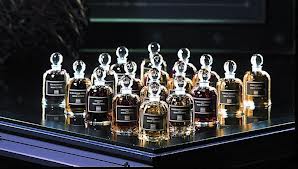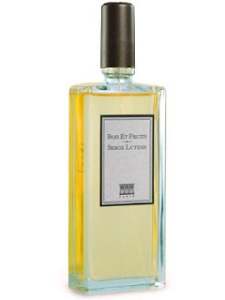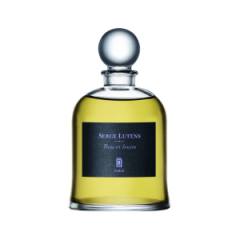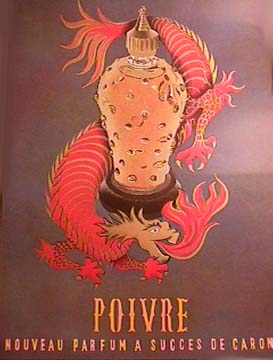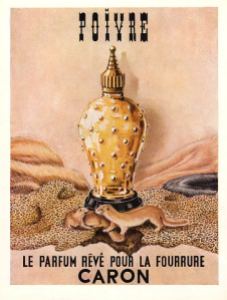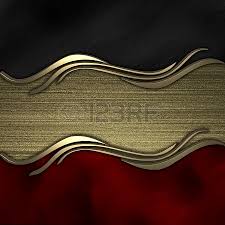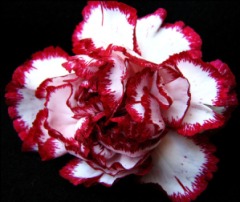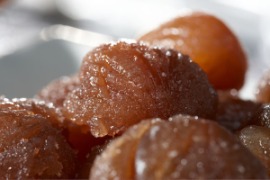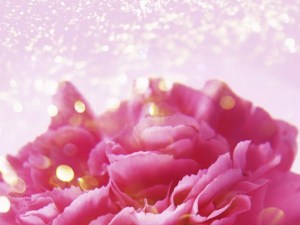A cashmere cloud of cream and pink, with the soothing comfort of Mary Poppins telling you take a spoonful of sugar at bedtime. There is no medicine to go with that sweetness in this case, only marzipan treats, powdered meringues, and vanilla milk. It’s an absolutely addictive spoonful of deliciousness that, alas, fades away to a lingering whisper all too quickly.
Cuir Beluga from Guerlain reminds me of Mary Poppins, the comfort of the nursery at bedtime with softened lights adding a warm glow, and endless plates of almondy confections with marzipan, all accompanied by vanilla cream. I have never been so enchanted by the opening of one of Guerlain’s modern, niche perfumes, or more crushed when it evaporated to a silken wisp less than 20 minutes in. It remained there for many more hours, but the true glory was gone astonishingly quickly, and that is a serious problem for me.
Cuir Beluga is part of Guerlain’s exclusive L’Art et La Matière Collection which was launched in 2005. The name of the line means “Art and (raw) Materials,” and represents Guerlain’s goal of creating olfactory Art through the use of the finest raw materials in perfumery. As Fragrantica further explains, “L’Art et la Matière” is also “a pun after the French expression L’Art et la Manière – the art and manners.” As for the “Beluga” part of the perfume’s name, I’ve read that it refers to one of two things: either the word for “white” in Russian, or to the whiteness of a Beluga whale (which is also sometimes called a “white whale”). In either case, the point is whiteness, with a pun on the luxurious of caviar, but the scent has absolutely nothing to do with fishiness whatsoever.
Cuir Beluga is an eau de parfum that was released in 2005, and was created by Olivier Polge, the son of Chanel‘s famous in-house perfumer, Jacques Polge. On its website, Guerlain describes the scent as a “velvety oriental” and writes:
Light and shade meet on the skin.
With Cuir Beluga, the Guerlain perfumer chose to interpret the softness of white suede in an absolutely luxurious and addictive version. Like an intense, warm light on the skin, the fragrance opens with an aldehyde mandarin accord drawn out into an everlasting flower note and then wrapped in a voluptuous cloud of amber, heliotrope and vanilla. An intense and totally unexpected sensorial experience.
In a different part of the same Cuir Beluga entry, Guerlain adds that the leather is “a white suede for women and men, as enveloping as cashmere,” and also says the fragrance is:
Luminous, rare, enveloping.
Top notes: aldehydes, mandarin.
Heart notes: patchouli, everlasting flower [Immortelle].
Base notes: vanilla, amber, heliotrope, white suede note.
It is impossible to analyse Cuir Beluga without discussing heliotrope, so a brief description of the note may be useful for those unfamiliar with the name. Fragrantica has a great explanation of both its aroma, and how it appears in the other, well-known, heliotrope-centered fragrances:
The odour profile is powdery, like vanilla meringue with a helping of almond. The characteristic comforting scent of heliotrope has been proven to induce feelings of relaxation and comfort, a pampering atmosphere that finds itself very suited to languorous oriental fragrances and delicious “gourmands”.
In Kenzo Amour the heliotropin take is on the vanillic side, boosted by milky notes. In Love, Chloe we encounter the retro-smelling pairing of heliotropin and violet notes producing a powdery effect, reminiscent of makeup products. […] In Lolita Lempicka eau de parfum heliotropin takes a anisic mantle and becomes a full-blown gourmand, while in the older Cacharel Loulou it’s the comforting billowy background alongside tonka bean (with which it shares an almond and hay facet) and orris, producing a true floriental. In L’Eau d’Hiver (F.Malle) heliotropin is almost reduced to its pure state: fluffy, like a late afternoon cloud. [Emphasis to names added by me.]
In the past, Guerlain has loved using heliotrope in conjunction with other elements, but one of the goals of the L’Art et La Matiere collection is to highlight a single raw material. Cuir Beluga may have leather in its name, but, in my opinion, the material being highlighted here is actually the Heliotropin of so many old Guerlain masterpieces. As that Fragrantica page explains:
classic scents have also greatly benefited from heliotropin, notably the nostalgic L’Heure Bleue by Guerlain which pairs the vanillic facet of heliotropin with anise on top, soft flowers in the heart (violet and carnation) and benzoin, iris and Tonka bean in the base to compliment the floral-oriental character of this iconic composition. Or the more ethereal Guerlain Apres L’Ondee which is mainly the pairing of warm heliotropin with cool and shy violets. [Emphasis to names added by me.]
Cuir Beluga opens on my skin with a brief touch of light boozy sweetness, followed by heliotrope and a hint of honeyed floral Immortelle, all wrapped in a soft, rich, deep, amber embrace. The heliotrope smells simultaneously like delicate flowers, almond paste, meringues, powder, and sweetened Play-Doh. It’s an incredibly soothing, comforting mix, and instantly made me think of Mary Poppins wrapping someone up in a warm, pink flannel, while telling them to have a spoonful of sugar. The boozy touch quickly vanishes, as does the immortelle. The latter never smells of any of its usual manifestations on my skin. It’s not dry, dusty, green, curry-like, or heavy maple syrup. Instead, it was merely a brief touch of warm flowers, that accentuated the delicate floralacy of the heliotrope.
Within minutes, Cuir Beluga turns into a deliciously pillowy, fluffy blend of Play-Doh (one of heliotrope’s main characteristics) with almond-y marzipan and a whiff of flowers in a vanilla cocoon that is just barely flecked with amber. I have a massive soft spot for heliotrope when it’s done well, and it most certainly is in this instance. Marzipan is also one of my favorite confectionary sweets, which pretty much makes me a goner for Cuir Beluga’s opening minutes. I’ve tried the perfume a few times over the last few months, and the beautifully balanced sweetness of the marzipan, almond vanilla grows more addictive with each wearing. It’s never cloying, heavily sugared, cheap, or artificial in nature.
Instead, the perfume takes a mere 15 minutes to turn into the epitome of creaminess. Every note in Cuir Beluga is streaked through with something that, alternatively, makes me think of Carnation condensed milk, sweetened milk, ice-cream, or pure cream infused with vanilla and almonds. It’s perfectly balanced, luxuriously rich, but incredibly airy all at once. As the almond meringue and Play-Doh aspects of the heliotrope grow stronger, along with the subtle whiff of sweetened powder, I think back to Fragrantica’s description of heliotrope as an aroma that induces relaxation. I would love to wear Cuir Beluga to sleep and sprayed on my sheets, because it’s so incredibly comforting.
If only that gloriousness lasted…. Cuir Beluga starts as a very soft scent that hovers 2 inches above the skin, at best, in its most concentrated, opening minutes. With the equivalent of 2 sprays, it takes a mere 30 minutes for the perfume to drop to something that lies right above the skin. It slowly begins to soften even more, losing minute by minute what ever richness and weight that it had. My skin has problems with longevity but almost never with sillage, so I was taken aback by the speed with which Cuir Beluga started to vanish from the aether.
A mere 75 minutes in, Cuir Beluga is a complete skin scent on me, and I’ve tested it a few times. I suppose you can push that time frame more if you apply a lot, but I doubt even a massive amount could give you more than 2.5 hours at most before the perfume slips away into a gauzy whisper. Plus, given the cost of the perfume, do you really want to be dousing yourself with 5 or 6 (or more) sprays each time? Of course, there is a chance that it might merely be my skin, but given other reports elsewhere (that we will discuss in a minute), I doubt the problem is unique to me.
Despite the unobtrusiveness of the scent, Cuir Beluga is still very pretty. At the end of the second hour, the notes all blur into each other, leaving a general impression of creamy Play-Doh, sweetened almonds, milk, and Tonka vanilla powder. You may notice that I have not mentioned the word “leather” even once in my descriptions thus far. Well, for me, and on my skin, Cuir Beluga is a “leather” scent the way Queen Latifah is the Queen of England. The mere use of a word has absolutely nothing to do with reality. Near the end of the second hour, for a fleeting moment, I had the impression of sweetened, white, leathered suede, but honestly, I’m pretty sure it was merely a figment of my imagination. In any event, that tiny whiff of “suede” vanished within minutes.
Cuir Beluga is a very simple, uncomplicated, linear scent on my skin. It never changes in any substantial way, except to become even more discreet and harder to detect. About 3.5 hours into its development, it is the merest gauziest trace of heliotrope Play-Doh and vanilla on my skin. It’s far too thin and translucent to be creamy in the same way that it once was. In the same way, it’s too sheer to even come across as heavily powdered in the usual Guerlain way. Both elements are there in the most muted, muffled way imaginable, but Cuir Beluga is largely a vanilla and heliotrope scent on my skin, then just vanilla with some powder. In its final moments, the perfume was merely a blur of sweetened powder. All in all, Cuir Beluga lasted just over 9.25 hours with two sprays, and just under 8 hours with one.
The most important of all perfume critics, Luca Turin, doesn’t seem to think much of Cuir Beluga. In Perfumes: The A-Z Guide, he categorizes Cuir Beluga as a “powdery amber,” and spends a good portion of his three-star review talking about how Guerlain used the L’Art et La Matiere collection to finally acknowledge the impact of niche perfumery — primarily and specifically of Serge Lutens. (He more or less implies that Guerlain flat-out copied Lutens “in the structure of the fragrances, their cod-poetic names, and the tall rectangular bottle.”) When he does talk about the actual fragrance, Luca Turin doesn’t seem very enthused, and he certainly didn’t consider Cuir Beluga to be a leather scent:
Cuir Beluga’s name, with its suggestion of large sofas and small portions of caviar, is no doubt intended to flatter a French fondness for naff luxury. The fragrance is basically a light, heliotropin vanillic amber with a touch of floral green notes in the heart and a smidgeon of suede. It has a pleasant color and texture, and no discernible shape at all.
I agree with him on almost all of it, but I like the scent significantly more than he does. At least, I do until I remember the price. $250 for an uncomplicated, linear, simplistic Play-Doh, vanilla scent that becomes incredibly hard to detect in a short amount of time seems a bit like Rolls Royce prices for the most souped-up, luxurious, opulent Honda around.
I’m not the only person who had some problems with Cuir Beluga’s sillage. On Fragrantica, one person writes:
I love this pretty scent, but it is the quietest of skin scents on me. I’d have to douse myself in it to be able to smell it, which is a disappointment.
Quite a few others talk about something similar. Of course, there are people who adore discreet, wholly unobtrusive fragrances, but I think the majority of them would like to be able to smell their perfume even moderately if they are paying as much as $250 for it.
Putting aside the wispiness of Cuir Beluga, it seems much beloved by those who have tried it, though the majority of its fans seem to be women. There are some critics, however, and a number of men seem to struggle with the fragrance’s sweetness, lack of leather, or its simplicity. Here are a range of opinions:
- Cuir Beluga is not a leather perfume; nor is it particularly sexy or exciting. It smells to me of tapioca custard, i.e. a fairly simple, cozy scent. There are plenty of other, far less pricey, cozy fragrances out there.
- Extremely sweet. A vanilla invasion for the nose. Powdery, and floral as well. Don’t see my self wearing this alone, maybe mixed. This to me will fit a woman better. Great quality.
- I love leather perfumes, that slightly animal and sensual vibe a good leather perfume has, but this is much more soft and in the line of Daim Blond and Cuir de Lancome. Not leather but suede. It’s so elegant, and for a vanilla perfume not really gourmand or extremely sweet. Very wearable for many occasions. [¶] Sadly, sillage was very weak on me and therefor I’d think I’d prefer the more daring SDV or the powderpuffy Tonka Imperial over this. But she’s really interesting and really something to try if you like understated chique yet comforting scents.
- I feel a velvety aurea, comfortable, looks leather with caramel, amber acts that way, blended with vanilla, I feel in a Rolls Royce in the streets of Monaco, eating a caramel trifle. [¶] Rich, important and compelling for all these aspects, Guerlain as always sensational.
- This is my Shalimar! It is classic, refined and rich in every sense of the word. A decadent feast of powdery vanilla with the subtle essence of leather in the background. I find myself craving this scent. It is almost intimidating how elegant it is to begin with, but then it softens and becomes a beautiful comforting smell that I liken to someone of distinguished esteem. It smells wealthy without the pretentiousness.
- I agree that this has a wonderful vintage feel and where Shalimar for me is unwearable (Oh the horror!!!), this works. As soon as I sprayed it I immediately thought even if my bottle didn’t have a label this is so absolutely recognizable as Guerlain you would know what house created this scent. For me, as with some other Guerlain scents, this one needed 15 minutes to relax a bit. As is typical with Guerlain, this scent is all about powdery vanilla leather. If you love Guerlain and its beloved Shalimar this is sure to move you. I know I always rave about Guerlain (what can I say…I’m a fan) but this scent is blended so beautifully resulting in this rich powdery soft vanilla.
I found Cuir Beluga to be too gourmand, simplistic, and sweet to really be akin to Shalimar, at least vintage Shalimar with all its complexity and its strong backbone of leather and smoke. However, The Non-Blonde found a similarity in the classical feel or style of the two scents. In a 2010 review, she writes:
Guerlain and perfumer Olivier Polge didn’t take much of a risk in creating Cuir Beluga, but I’m not complaining. Compared to so many of the other Guerlain releases of the last five or ten years, Cuir Beluga is as close to the classics as one can get nowadays. More Shalimar than Mitsouko, this is not a difficult perfume in any way, and the large doses of very sweet vanilla make it go down easily for just about anyone (other than vanilla haters, but if you’re one, chances are that Guerlain is not really your thing to begin with).
What little drama we get in this perfume comes from the smooth leather. Some smell suede and compare Cuir Beluga to Daim Blond, but I don’t agree. To my nose it’s the finest most luxurious leather you can find. I have a pair of tall Jimmy Choo boots that feels this soft and timeless. It’s something that could have existed 50 years ago and has both an air of mystery and a determined backbone, despite the softness and the obvious sex appeal. I love touching and smelling my boots (us scentheads tend to shove our schnozes into the weirdest things and places) as it gives me a similar thrill to experiencing Cuir Beluga. I just wish the leather note in the perfume would have lasted longer before it becomes all vanilla, all the time.
Even if the leather note didn’t last long on her skin, she obviously experienced a lot more of it than I did. On me, the leather was nonexistent, and I suspect the suede was a figment of my imagination. I didn’t mind, though, because I loved my marzipan-almond meringue and vanilla cream, and found it delectable while it lasted. I would absolutely wear Cuir Beluga to bed, if I didn’t have to spend $250 for about 30 minutes of true, undiluted gloriousness.
Obviously, skin chemistry is going to make a difference in terms of how Cuir Beluga’s sillage, sweetness, “leather,” and powder manifest themselves on your skin. Given the perfume’s cost, I would recommend more than ever for you to test it first or order a sample. However, I must emphasize that, if you go into Cuir Beluga expecting a true leather scent, you will probably be disappointed. This is a primarily a gourmand fragrance with sweetness, powder, and vanilla. It also skews quite feminine in my opinion.
I think Cuir Beluga is very over-priced for what it is, but cost is a subjective determination and, in the case of this particular Guerlain at least, there is the quality and luxuriousness to back it up. In short, to paraphrase Mary Poppins, you may want to take a spoonful of sugar to make the price easier to swallow, as you wrap yourself in the pillowy, cashmere softness of Play-Doh, almond marzipan, and powdered vanilla.












